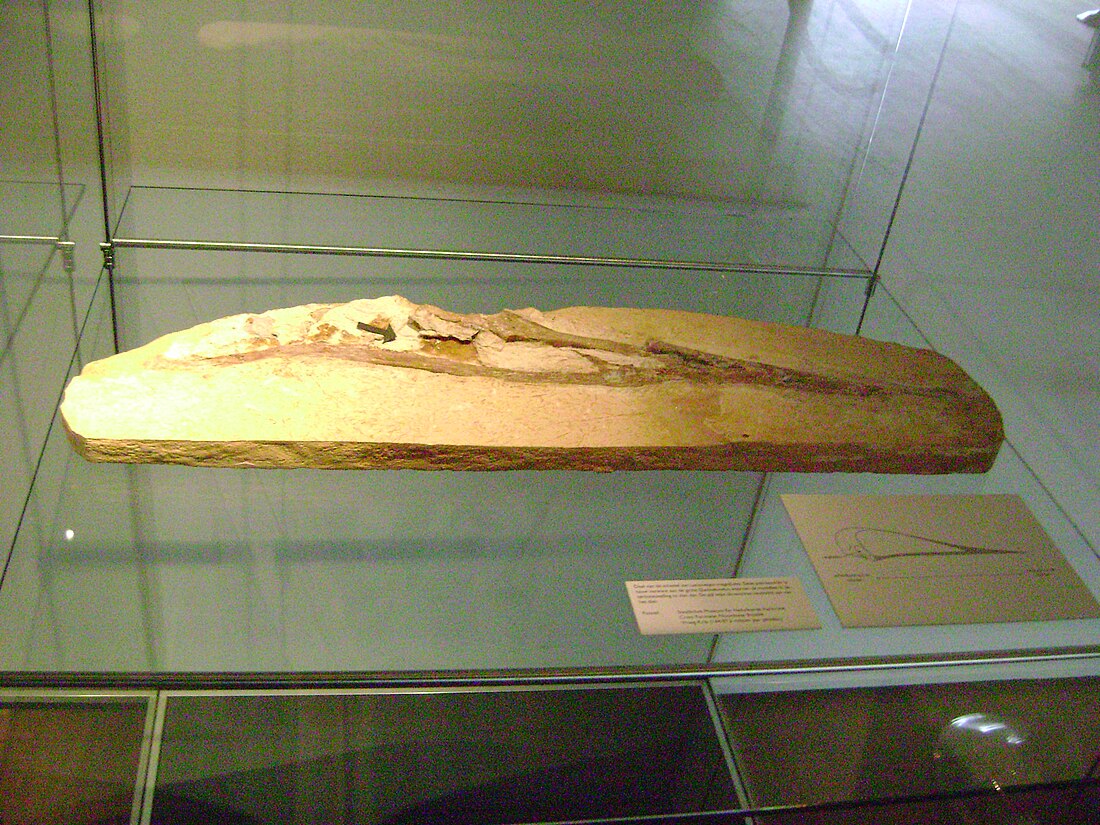Top Qs
Timeline
Chat
Perspective
Lacusovagus
Genus of azhdarchoid pterosaur from the Early Cretaceous From Wikipedia, the free encyclopedia
Remove ads
Lacusovagus (meaning "lake wanderer") is a genus of azhdarchoid pterodactyloid pterosaur from the Lower Cretaceous of Brazil.
Remove ads
Discovery and naming
It is based on SMNK PAL 4325, a partial upper jaw comprising sections of the skull in front of the eyes. This specimen was found in rocks of the Early Cretaceous-age (probably Aptian stage, about 120 to 93 million years ago) Nova Olinda Member of the Crato Formation.
Description
The skull was long, and unusually wide. The section in front of the combined nasal-antorbital fenestra was relatively short. Also unusual was the combination of its toothless jaws and no bony head crest. Lacusovagus was described in 2008 by Mark Witton. The type species is L. magnificens, meaning "grand lake wanderer", in reference to its large size—it is currently the largest pterosaur known from the Crato Formation with an estimated wingspan of approximately 4 metres (13 ft) and a body mass of 30 kg (66 lb).[1][2]
Remove ads
Classification
Lacusovagus shares many characteristics with the basal azhdarchoid family Chaoyangopteridae, and preliminary studies suggested it was a member of that clade.[1] However, in 2017, a phylogenetic analysis found it to be within the genus Tupuxuara, a member of the Thalassodromidae.[3]
See also
References
External links
Wikiwand - on
Seamless Wikipedia browsing. On steroids.
Remove ads

